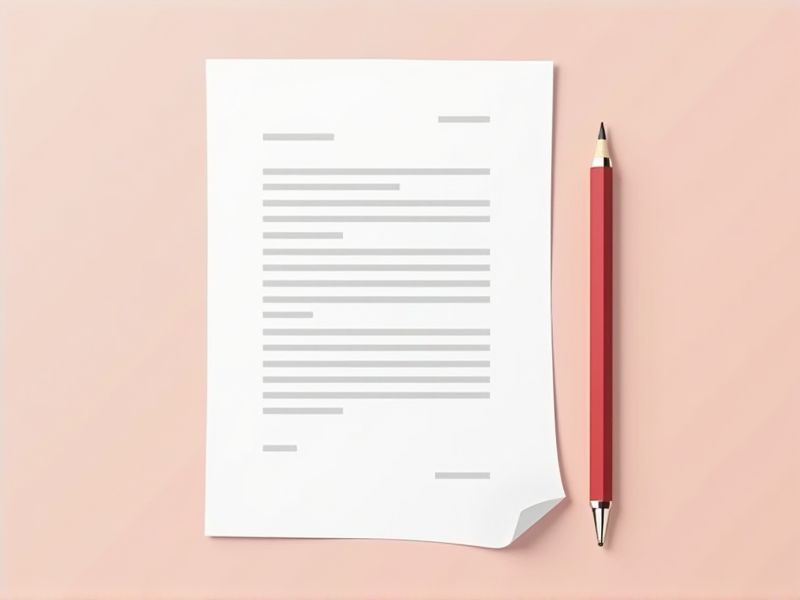
When writing a letter as an exchange student, it's important to maintain a clear and polite format to ensure effective communication. Start with a proper greeting, followed by a brief introduction of yourself, including your name, home country, and the purpose of your exchange. Next, share your experiences, expectations, or any questions you might have about the program or host country. Keep the tone friendly and respectful, making it easy for the reader to engage with your message. For practical guidance, be sure to check out the various letter templates available in this article to help you craft the perfect exchange student letter.
Samples of letter format for exchange student
Exchange Student Host Family Letter Format
Letter Format For Requesting Exchange Student Placement
Formal Letter Format For Exchange Student Application
Letter Format For Exchange Student Visa Support
Exchange Student Recommendation Letter Template
Letter Format For Exchange Student Program Inquiry
Exchange Student Thank You Letter Format
Letter Format For Communicating With Exchange Student
Exchange Student Introduction Letter Format
Letter Format For Exchange Student Experience Sharing
Letter Format For Scholarship Application For Exchange Students
Exchange Student Acceptance Letter Format
Letter Format For Exchange Student Coordinator Communication
Letter Format For Exchange Student Orientation
Exchange Student Host Family Introduction Letter Format
Letter Format For Feedback On Exchange Student Program
Letter Format For Exchange Student Cultural Exchange
Exchange Student Letter To Host School Format
Letter Format For Exchange Student Program Completion
Letter Format For Exchange Student Emergency Contact Information
Important Things to Know when Writing Letter Format For Exchange Student
Proper Salutation And Introduction
A proper salutation sets the tone for your letter, making it essential to address the recipient respectfully. Begin with a polite greeting, such as "Dear [Recipient's Name]," to establish a formal connection. Following the salutation, introduce yourself briefly, mentioning your name, your current school, and your reason for writing. This introduction helps the recipient understand your background and the context of your letter, fostering a positive impression right from the start.
Clear Statement Of Purpose And Exchange Program Details
A clear statement of purpose is essential when composing a letter for an exchange student program, as it conveys your motivations and goals for participating. Include specific details about the exchange program, such as its duration, host country, and academic opportunities, to provide context and show your genuine interest. Tailoring your letter to highlight how the experience aligns with your educational aspirations further enhances its impact. Ensuring that all necessary information is clear and concise not only demonstrates professionalism but also helps the selection committee understand your commitment to the program.
Formal And Polite Tone Throughout The Letter
A proper letter format for an exchange student should emphasize a formal and polite tone to ensure respectful communication. Start with a clear header that includes your address and the recipient's address, followed by an appropriate greeting. Throughout the letter, maintain a professional vocabulary while expressing gratitude or addressing any specific concerns. Conclude with a courteous closing and your signature to leave a lasting positive impression.
Inclusion Of Personal Background And Motivation
In your letter format for exchange programs, incorporating your personal background and motivation is crucial. This element allows you to convey your unique experiences and cultural insights, which can significantly enhance your application. Be sure to describe how your background informs your perspective and why you are eager to embark on this exchange journey. Highlight your motivations, such as personal growth, cultural exploration, or academic pursuits, to create a compelling narrative that resonates with selection committees.
Contact Information And Gratitude Closing
When writing a letter for an exchange student, it is crucial to include your contact information at the top, ensuring the recipient knows how to reach you easily. This section typically features your name, address, phone number, and email, providing multiple ways for the recipient to respond. Ending the letter with a gratitude closing, such as "Thank you for considering my application," conveys appreciation and reinforces a positive tone. Such details not only create a professional impression but also enhance the effectiveness of your communication.
